Below query will return your expected output.
WITH table AS (
SELECT 1001 as ID, ['blue','green'] As Color, ['big'] AS size UNION ALL
SELECT 1002 as ID, ['green','yellow'] As Color, ['medium','large'] AS size UNION ALL
SELECT 1003 as ID, ['red'] As Color, ['big'] AS size UNION ALL
SELECT 1004 as ID, ['blue'] As Color, ['big'] AS size
)
SELECT * FROM (
SELECT ID, type, value FROM table UNPIVOT (values FOR type IN (Color, size)), UNNEST(values) value
) PIVOT (COUNT(1) FOR type || '_' || value IN (
'Color_blue', 'Color_green', 'Color_yellow', 'Color_red', 'size_big', 'size_medium', 'size_large'
));
Query results

Based on @Mikhail's answer using a dynamic sql, you can partially generalize the query. (column names are still hard-coded.)
DECLARE Colors, Sizes ARRAY<STRING>;
CREATE TEMP TABLE sample_table AS (
SELECT 1001 as ID, ['blue','green'] As Color, ['big'] AS size UNION ALL
SELECT 1002 as ID, ['green','yellow'] As Color, ['medium','large'] AS size UNION ALL
SELECT 1003 as ID, ['red'] As Color, ['big'] AS size UNION ALL
SELECT 1004 as ID, ['blue'] As Color, ['big'] AS size
);
SET (Colors, Sizes) = (
SELECT AS STRUCT ARRAY_AGG(DISTINCT IF(type = 'Color', value, NULL) IGNORE NULLS),
ARRAY_AGG(DISTINCT IF(type = 'size', value, NULL) IGNORE NULLS),
FROM `your-project.your-dataset.input_table` UNPIVOT (values FOR type IN (Color, size)), UNNEST(values) value
);
EXECUTE IMMEDIATE FORMAT("""
CREATE OR REPLACE TABLE `your-project.your-dataset.output_table` AS
SELECT * FROM (
SELECT ID, type, value FROM `your-project.your-dataset.input_table` UNPIVOT (values FOR type IN (Color, size)), UNNEST(values) value
) PIVOT (COUNT(1) FOR type || '_' || value IN (%s,%s)) ORDER BY ID;
""", (SELECT STRING_AGG(FORMAT("'Color_%s'", color)) FROM UNNEST(Colors) color),
(SELECT STRING_AGG(FORMAT("'size_%s'", size)) FROM UNNEST(Sizes) size)
);


